Most DIYers recognize the importance of using the right tool for the job. But while they may spend hours researching what drill to purchase, they often fail to give enough consideration to what will actually be in contact with their work material: the drill bit.
Choosing the right drill bit is about saving your single most important resource — your time. So for peak efficiency, it pays to understand the different types of drill bits, and which one is right for your project.
On This Page
A drill bit is a rotary cutting tool that makes holes. The point of the bit contacts the material you’re drilling into, while the shank — the back end — is clamped in place by the jaws of a drill chuck.
There are many types and styles of drill bits, enough to fill an entire aisle in a hardware store. For our purposes, we’ll be focus on those most widely used in DIY projects.
Drill bits are primarily used for creating circular holes in materials from drywall and wood to metal and masonry. They might create a hole for an anchor or fastener, or a passage to feed wiring. Bits are sold individually and in multi-sized sets, commonly called drill indexes.
When selecting a drill bit, consider its physical shape, what it’s made of, and the work material you’re drilling into.
The easiest factor to consider when selecting a drill bit is its physical shape.
A twist bit (sometimes called a fluted bit) is far and away the most common type of drill bit, probably because it’s the one with the greatest number of uses.
A twist bit gets its name from the spiraled grooves, called flutes, along its body. As the bit bites into the work material, the flutes direct waste material up and out of the hole.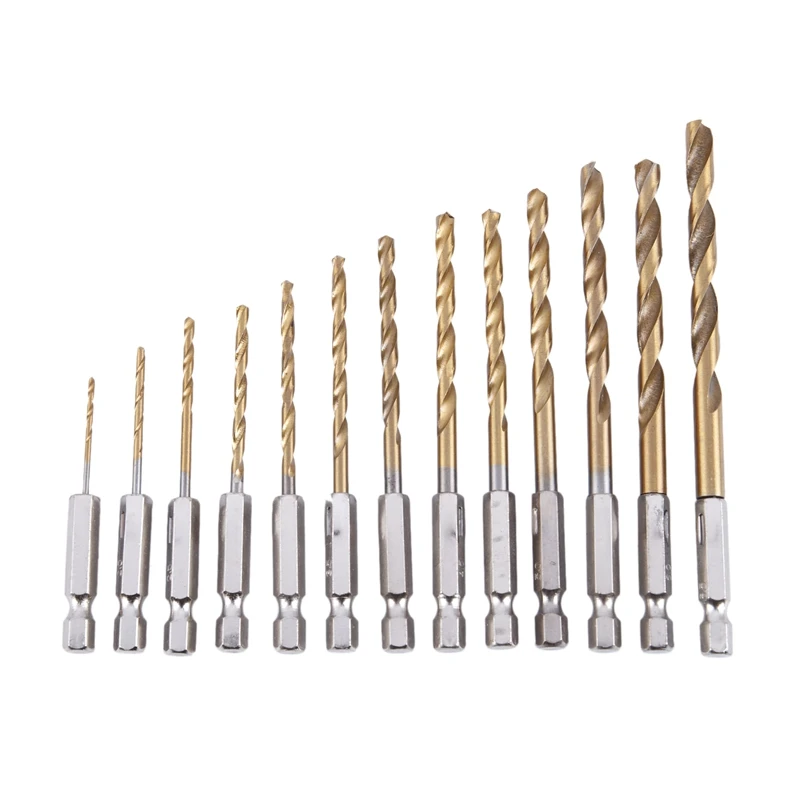 Twist bits are generally the starting point when drilling a hole. Many drill bits, such as brad bits or masonry bits, are variations on the basic twist bit structure.
Twist bits are generally the starting point when drilling a hole. Many drill bits, such as brad bits or masonry bits, are variations on the basic twist bit structure.
But there’s a limit on the size of twist bits, beyond which the weight and heat become impractical. In general, twist bits work well for holes up to one inch in diameter. Holes larger than an inch require a spade bit or hole saw.
A spade bit is flat, with a sharp point in its center and material flaring out to either side, like a pair of bat wings. Spade bits remove a large section of material.
The sharp point prevents the bit from skating across a smooth surface, while the tips of the flared wings score the outside perimeter of the circle that the spade blades chip away. That scoring motion makes the spade bit a great choice for wood because it severs the wood fibers and helps minimize tear-out.
A hole saw also removes a large amount of material. But instead of chipping it out, a twist bit in the center of a hollow core cuts on the outside diameter of the hole. That leaves a round disk or core of material.
That leaves a round disk or core of material.
Step bits function as multiple drill bits in a single tool. Instead of a cylinder, these are cone-shaped, with a distinctive stair-step profile. Each “step” is one drill size larger than the next. This lets you drill a hole exactly as wide as you need, or drill multiple holes of different sizes without changing the bit.
Drill bits can be made of various materials. The following are far more likely to be useful to the average DIYer (and in their price range.)
These are robust steel drill bits, good for drilling into wood, plastic or metal. One downside: At high drill speeds, they can overheat and soften, becoming dull. This is especially common when drilling metal.
High-speed steel (HSS) bits are capable of prolonged drilling without losing their edge. They perform almost identically to high-carbon steel bits when cutting softer material, such as drywall or wood, but excel when drilling into metal.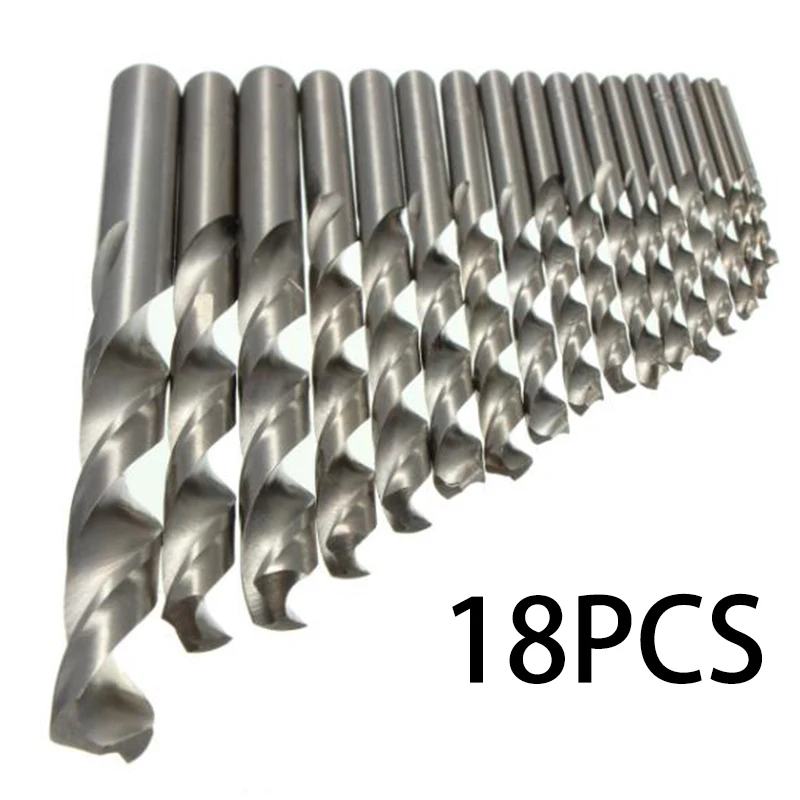 If you’re pricing out drill bits and the price between a carbon steel bit and an HSS bit is minor, opt for the HSS option.
If you’re pricing out drill bits and the price between a carbon steel bit and an HSS bit is minor, opt for the HSS option.
Drill bits made with carbide or carbide-coated tips are significantly more durable than steel bits, but also cost significantly more.
Most DIYers don’t need the extra resiliency of a carbide-tipped drill bit. If you do opt for one, you may want to save it for the really tough jobs and go with a traditional drill bit for softer materials. Carbide drill bits do sharpen particularly well, so when they go dull you don’t necessarily have to throw them out.
Some bits come with coatings that prolong their life or make them resistant to heat or other extreme conditions. These include titanium and even crushed diamond.
Here’s how to select the best bit for the application at hand.
For drilling into metals such as stainless steel, your best bet is a HSS twist bit.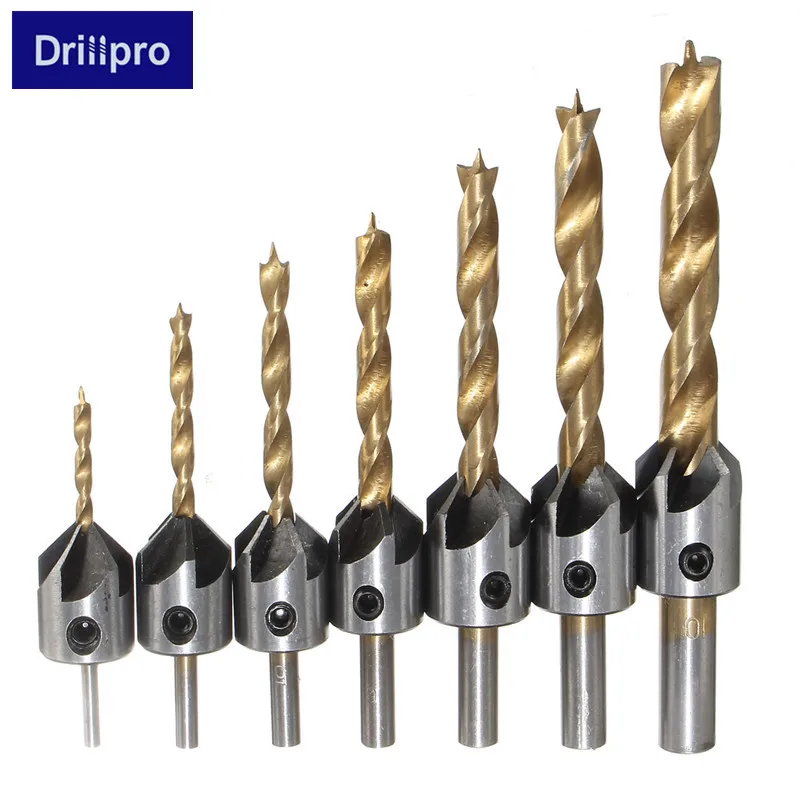 High-speed steel offers greater resistance to the high temperatures generated when drilling into metal, and the flutes on a twist bit will throw off metal strands that are relatively easy to clean up.
High-speed steel offers greater resistance to the high temperatures generated when drilling into metal, and the flutes on a twist bit will throw off metal strands that are relatively easy to clean up.
If you’re working with thin material or widening existing holes, use a step bit to get exactly the size you need. For creating holes of one inch or more in metal surfaces, consider a hole saw.
Masonry drill bits are good for surfaces like concrete, brick or mortar. They’re normally twist bits with a carbide fin at their point. The fin breaks up the masonry, while the flutes on the body remove the waste material.
Masonry bits are often used with a hammer drill, a specialized tool that adds a rapid hammering action to the bit. That allows it to reach fresh masonry and remove dust more efficiently.
The go-to bit for wood is a twist drill bit. A brad point on a drill bit will create a bit of “bite” and help prevent the bit from walking across the surface as you get up to speed.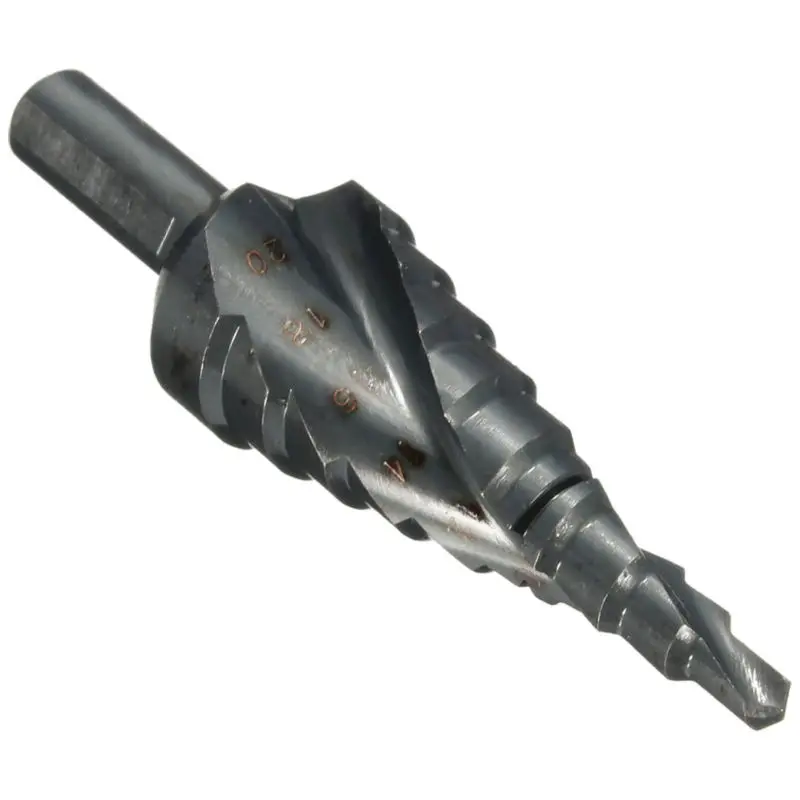 For holes of one inch or more, consider a spade bit.
For holes of one inch or more, consider a spade bit.
ⓘ
Most of us are guilty of using the wrong tool for the job—either out of necessity or laziness. Still, there’s something satisfying about using the right tool for the job. Often, using the right tool helps bring about the best possible result. When drilling, accessories matter—possibly even more than the tool you choose. Knowing the various types of wood drilling bits and how to use the right one can really increase both speed and quality.
Before we get to drill bit types, you should be familiar with the various treatments drill bit manufacturers use to increase bit life and reduce friction. Drill bits are made from steel, high-speed steel (HSS)—which is steel alloyed with tungsten and/or molybdenum, HSS with a cobalt alloy, HSS with titanium coating, HSS with black oxide coating, or carbide tipped.
Drill bits are made from steel, high-speed steel (HSS)—which is steel alloyed with tungsten and/or molybdenum, HSS with a cobalt alloy, HSS with titanium coating, HSS with black oxide coating, or carbide tipped.
Drill bits appropriate for wood drilling are steel, HSS, titanium coated, and black oxide coated. Those other bits work best for metals. We’ve written about black oxide coating and have reviewed the best drill bits as well as the best drill bits for metal.
Wood species are divided into the two general categories of softwoods and hardwoods, but there is also much hardness variation within those categories. The wood type makes a significant difference in bit choice. Drilling a soft pine will be much easier on a drill bit than drilling a hard hickory. You can drill softer wood with steel (although we’d recommend HSS for any job) but as the hardness increases, it must be matched by bit hardness.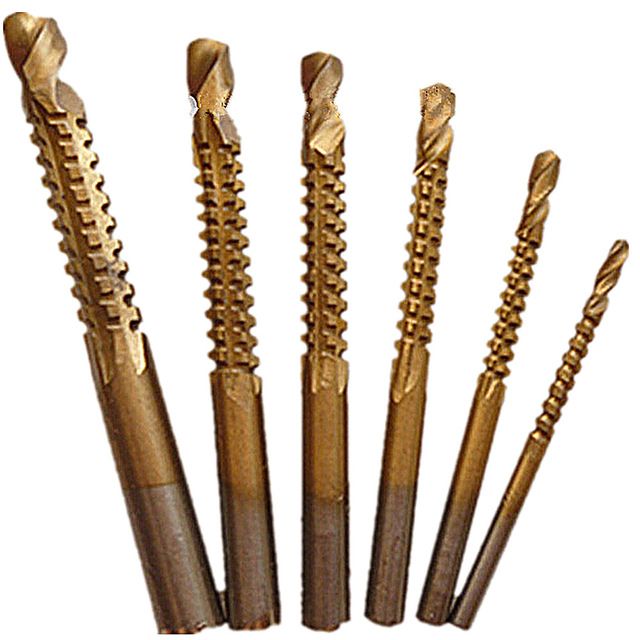 This means a titanium or black oxide coating is appropriate for hardwood.
This means a titanium or black oxide coating is appropriate for hardwood.
The purpose of the hole affects bit choice. Will the hole accommodate an anchor to hold a picture, will it be used for wire or conduit, does the fastener that goes in it need to be countersunk?
This is the type of bit that probably comes to mind first when you hear “drill bit.” It’s the most common type of bit and used for general purposes around the jobsite and home. Softwood can get stuck in the flutes, so gently remove it with a brush or by blowing it off.
As we mentioned above, twist drill bits (or “twist bits”) can range in price from affordable black oxide coated bits to expensive carbide bits used in milling. When it comes to choosing a drill bit for your wood project, a nice set of high-speed steel (HSS) bits should do just fine.
This wood drilling bit’s distinguishing feature is in the name.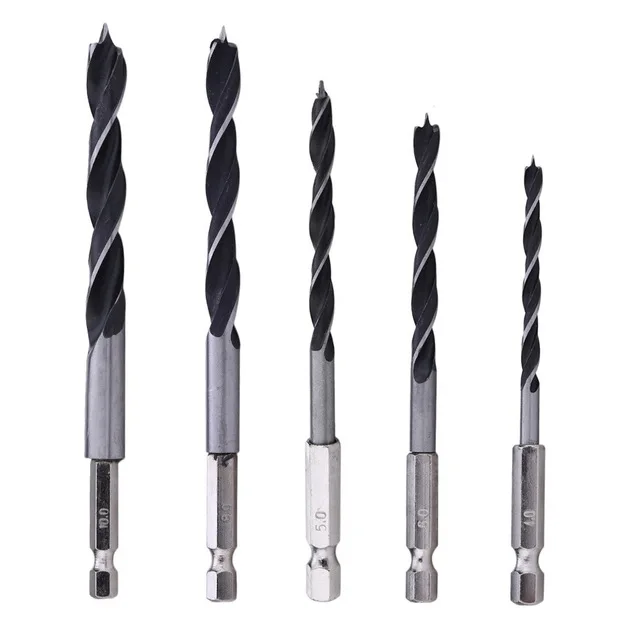 The sharp point on a brad point bit helps position the bit for a precise hole. These bits don’t walk on you when you start a hole. This makes this the right wood drilling bit for when you need a truly accurate start.
The sharp point on a brad point bit helps position the bit for a precise hole. These bits don’t walk on you when you start a hole. This makes this the right wood drilling bit for when you need a truly accurate start.
Spade bits have a broad, flat area for boring larger diameter holes in wood. The spade bit has no flutes so you may have to back off the bit as you go when drilling deeper holes. While a traditional spade bit has a perfectly flat face, products like the Bosch Daredevil spade bit feature a self-feed tip and a slightly curved face.
You’ll immediately notice a threaded tip on auger bits. This type of wood drilling bit uses the tip to quickly pull the bit through the wood. Auger bits maintain a constant flute throughout the length of the bit. These bits challenge cordless drills because they “force” the drill to maintain speed throughout the hole due to the self-feed tip.
Often confused with a Forstner bit, self-feeding bits include a threaded tip like the auger bit.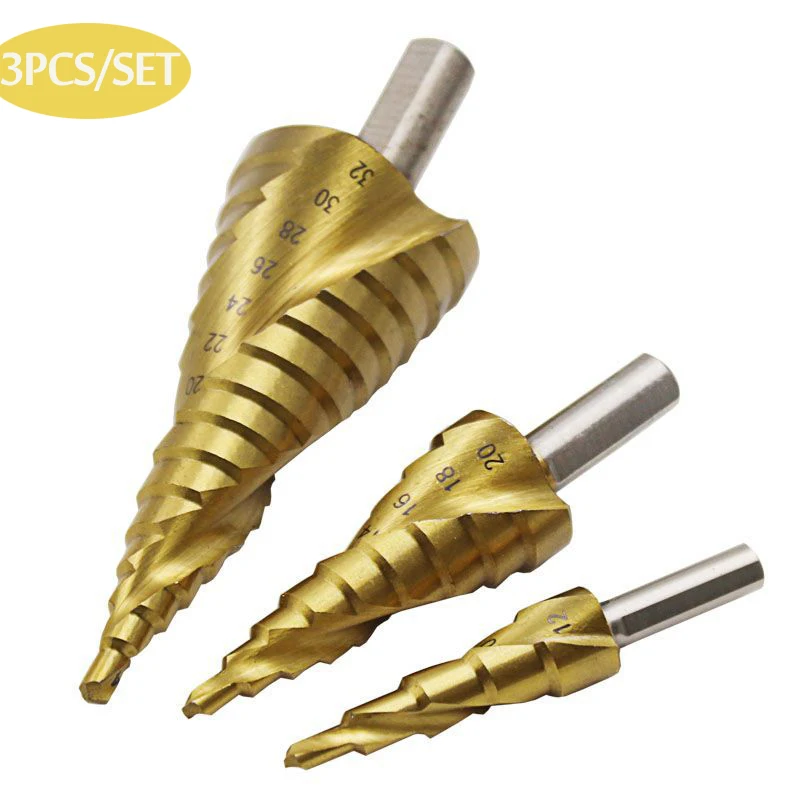 This pulls the bit through the wood. These bits are meant for holes that go all the way through the wood. This is exactly the right type of wood drilling bit when you want to make a lot of larger holes for rough-in. Typically, self-feed bits are used for boring larger holes.
This pulls the bit through the wood. These bits are meant for holes that go all the way through the wood. This is exactly the right type of wood drilling bit when you want to make a lot of larger holes for rough-in. Typically, self-feed bits are used for boring larger holes.
Self-feed bits can be a tad more aggressive than other large-diameter wood bits. They can also use either one or two cutting heads in addition to the perimeter cutting teeth. Check out our review of the Milwaukee self-feed bits and the Diablo SPEEDemon self-feed bits.
Just as the name implies, these long, skinny “bell hanger” wood drilling bits are used for electricians pulling wires or performing similar installation work. In addition to their long length, installer bits often feature a hole near the front of the bit for use with pulling wire.
A related bit to the installer bit is the flex bit which just uses a flexible shaft to let you get into tight spaces as needed.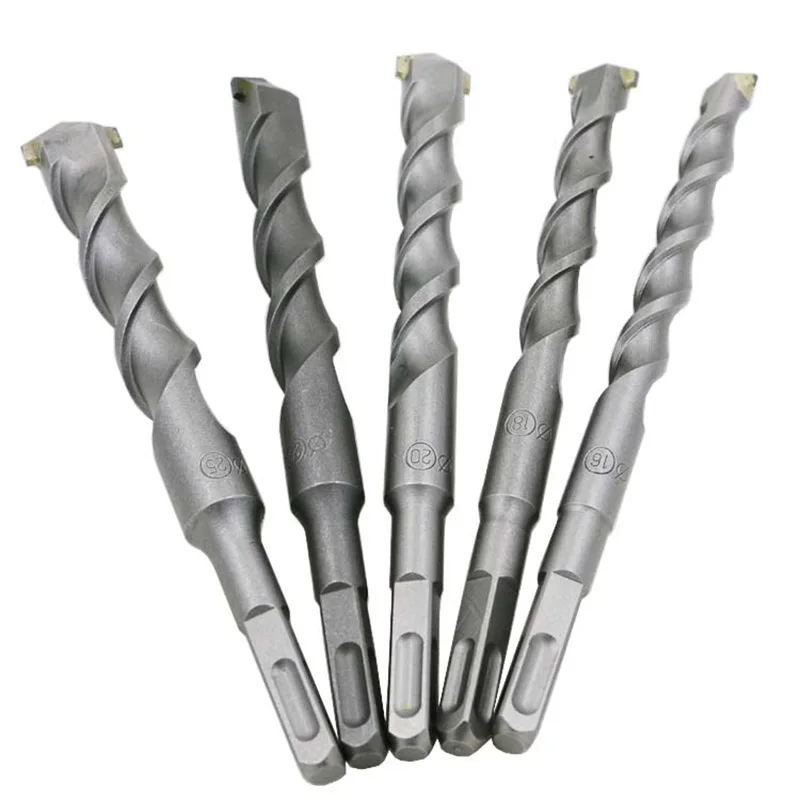 These can exist in lengths up to 72-inches.
These can exist in lengths up to 72-inches.
These bits perform double duty as they drill a pilot hole and countersink the hole at the same time. This ensures that the fastener head sits just below the surface of the wood.
These odd-looking bits bore through wood or create flat-bottomed holes if the hole doesn’t go all the way through the piece. Use them when setting up cabinet hinges or similar applications.
A hole saw uses a pilot twist bit to guide a large diameter rotary saw that removes a plug from the wood. This allows conduit or wires to pass through. You also use these bits when drilling out locksets for doors. You can find hole saws for both wood and metal.
By now we think it’s clear when and how to use the right wood drilling bit. Have anything to add from your experience? Sound off on Facebook, Twitter, and Instagram to let us know what you think!
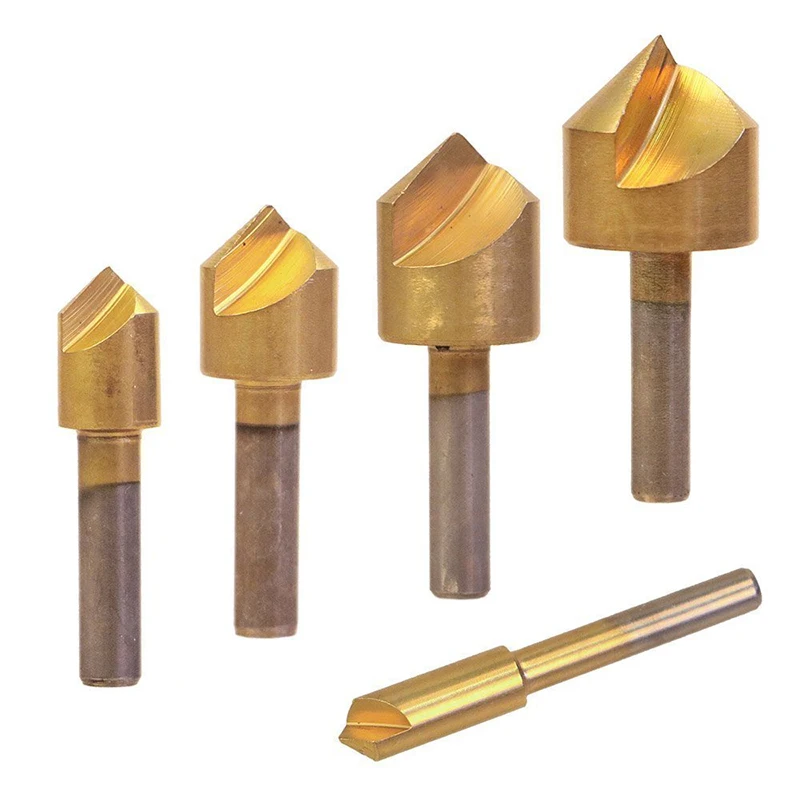
The effect of the drill on the skin of the Soyuz spacecraft was immediately obvious to the cosmonauts. This is evidenced by the recording of their conversations during the incident on the ISS. Meanwhile, Roskosmos asks the media not to use unofficial information.
Mid-September - until that time, the Russian State Corporation "Roscosmos" promises to find and publish the cause of the hole on the Russian manned spacecraft "Soyuz". At the same time, Roskosmos asks journalists to use only official information, which, however, is not available.
The story of the hole on the ISS has been making headlines in Russian and foreign media for a week now - since August 29, when it became known that the International Space Station suddenly began to slowly lose air. In the West, the first sources of information were industry-specific space media, in Russia - the head of Roscosmos, Dmitry Rogozin.
“We had an emergency on the ISS last night, an air leak, a pressure drop.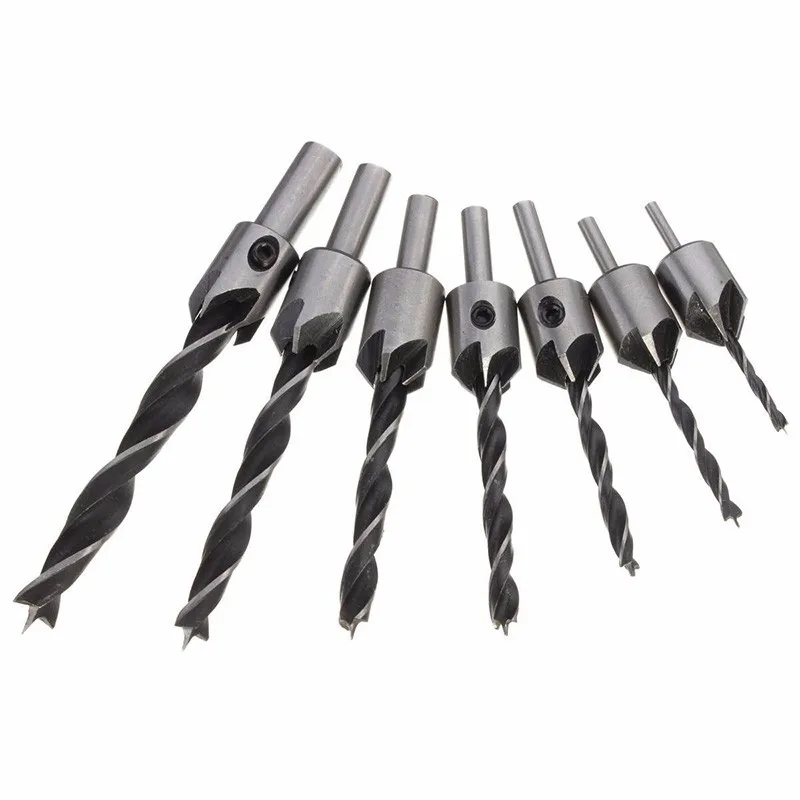 Steps were taken to determine where the leak was coming from. The American crew gathered in the Russian segment,” he said. - All six cosmonauts were in the Russian segment. Then the compartments were overlapped one by one in order to understand where what really happened. As a result, we localized the problem. It turns out that all this is on the Russian segment, and not on the American one, and not on the segment, but on the Soyuz MS spacecraft. The rate of leakage was not a threat - the pressure at the station dropped by about 0.8 millimeters of mercury per hour.
Steps were taken to determine where the leak was coming from. The American crew gathered in the Russian segment,” he said. - All six cosmonauts were in the Russian segment. Then the compartments were overlapped one by one in order to understand where what really happened. As a result, we localized the problem. It turns out that all this is on the Russian segment, and not on the American one, and not on the segment, but on the Soyuz MS spacecraft. The rate of leakage was not a threat - the pressure at the station dropped by about 0.8 millimeters of mercury per hour.
At this rate, the station would completely lose air in 18 days, experts calculated.
Having found the hole using an ultrasonic device, the astronauts first sealed it with a special Kapton tape, and then with a sealant, at present the hole is completely sealed. Now the main question is who drilled the hole, and no one doubts that it was a drill.
In the absence of official comments, the media began to try to find out the origin of the hole through their channels.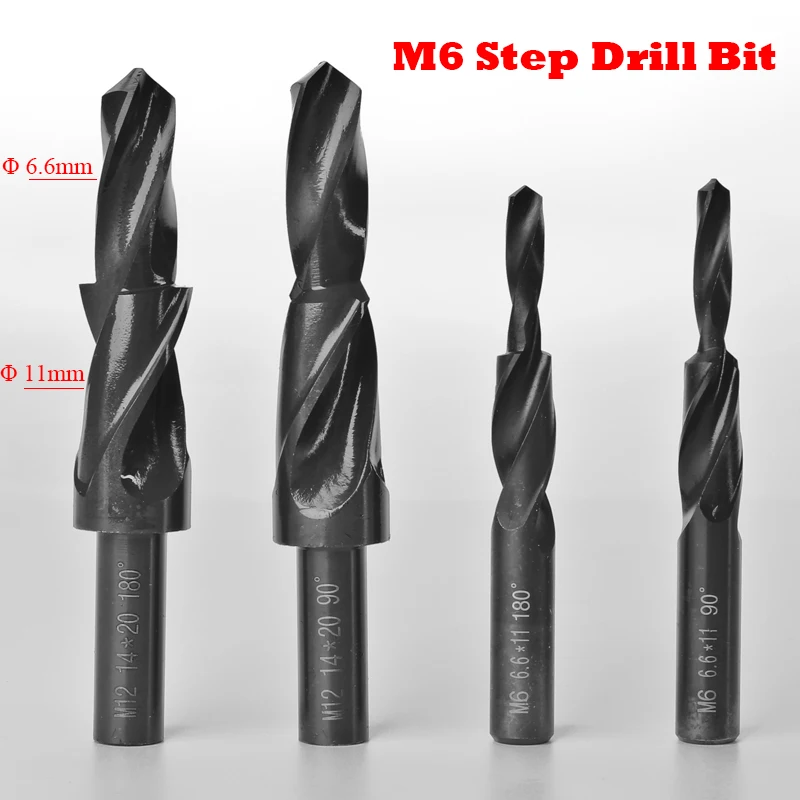 So, the source of Gazeta.Ru, who is familiar with the preliminary results of the investigation, told on the eve of ,
So, the source of Gazeta.Ru, who is familiar with the preliminary results of the investigation, told on the eve of ,
that the culprit had already been found and it really was the man who assembled the Soyuz at RSC Energia.
His name and position in the RKK are not known yet. “A simple hard worker, who was adjusting something, drilled the wrong way. Then (the hole) was covered with all sorts of adhesives, ”he said the source. “And when checking for tightness, the readings were normal.” By the way, this specialist interviewed by Gazeta.Ru dismissed the suggestion of Rogozin and State Duma deputy Maxim Suraev that someone in orbit could have drilled a hole: “They don’t even have a drill there.” However, it is known that there is a screwdriver on board the ISS.
Similar information is provided by the RIA Novosti agency, whose sources claim that some employees at the enterprise knew about the hole, because they tried to close it up on Earth. They also refute the assumption that a hole could have been drilled in the ship's hull already at Baikonur, since there are always a lot of people around the ship, in whose presence it is simply impossible to drill anything unnoticed.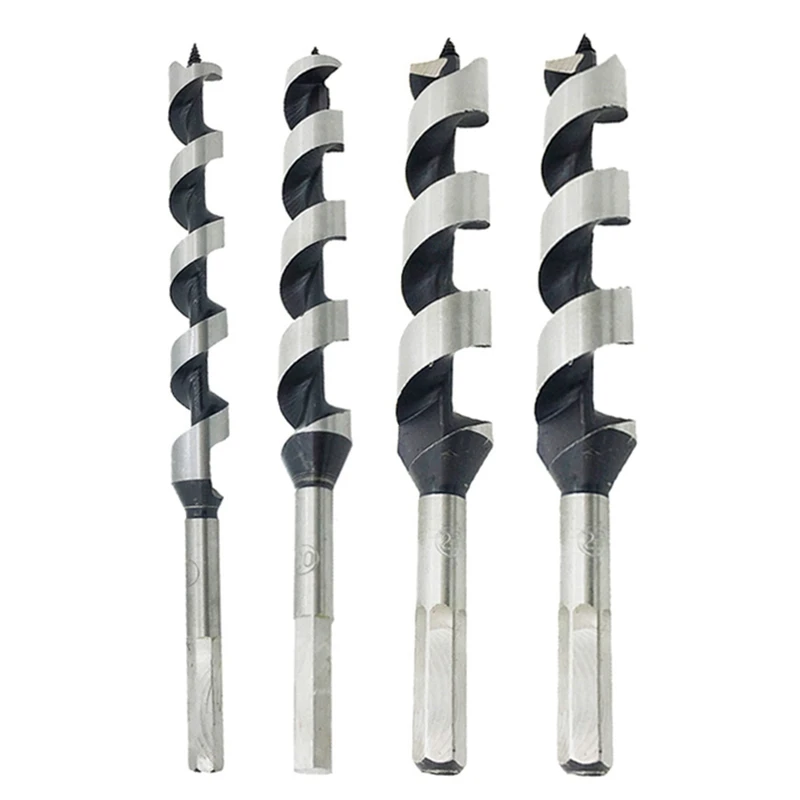
close
100%
meanwhile resource kosmolenta published scans of recordings of the ISS crew members' conversations that took place on September 30 when a hole in the skin was discovered. It follows from the transcript of the conversation that the crew members immediately suggested that the hole was the result of the impact of the drill:
12:57 Gerst says that the annular frame surrounds part of the utility compartment. 60 cm from the entrance hatch. Hole in the frame. metal material. Perhaps there is no second hole.
13:00 Oleg Artemiev: It seems that someone drilled through this hole with a drill. No, it's not a hole.
Alexander Gerst: There is metal under the hole, so it is not through. I put a centimeter in there somewhere, and found metal under the hole.
Alexander Gerst: It looks like a drilled hole and bits of metal from the drill. I put the tape on so my finger is free now. The leak is still present but much smaller.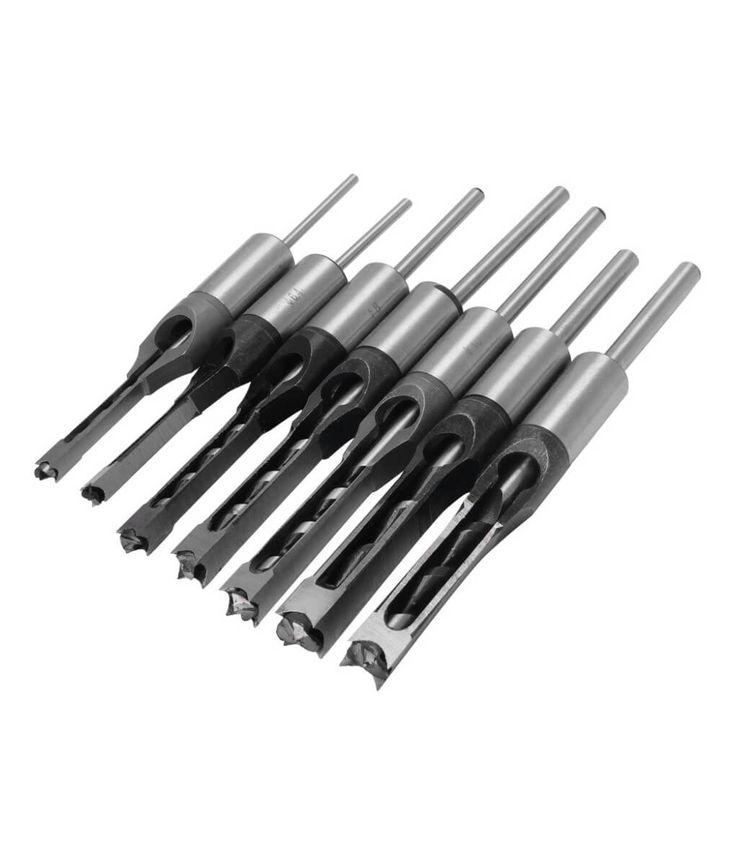
At 13.19, cosmonaut Oleg Artemiev reports that he has found "Germetal" - a sealant for sealing a hole. And Sergei Prokopiev delivers a verdict - “This surface was drilled. If you place a drill here, then there will be such a hole and traces.
Against the backdrop of emerging evidence, Roskosmos called on the media to refrain from publishing unverified information received from anonymous sources. The State Corporation assured that the work of the commission would be completed in mid-September. “Links to so-called “sources in the rocket and space industry” reporting various “versions” of the investigation are a way of manipulating information and influencing the work of commission representatives,” the State Corporation believes.
NASA is also silent. Given that the incident is related to the assembly and maintenance of the Russian manned spacecraft, NASA spokesman Dan Huot advised journalists to contact Roscosmos.
Perhaps we will soon see a fashionable strongman in Ukraine soon.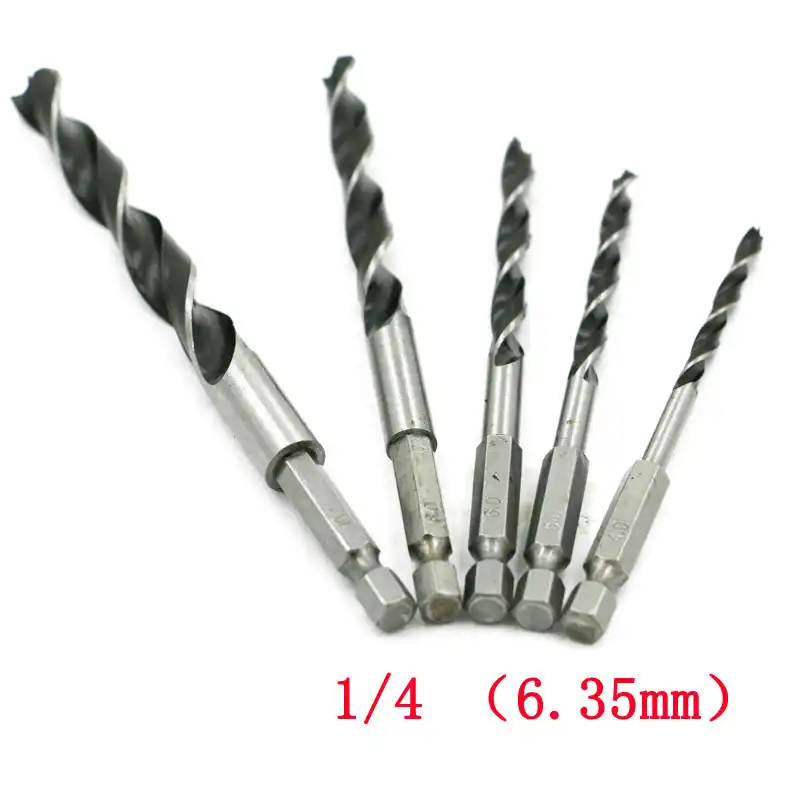 At the request of his daughter, a well-known Ukrainian businessman invited Ruslan to her birthday, offering a fee thirty (!) Times higher than the prices in Barnaul , hooking them on of their own hair. The record of the young man, who himself weighs 60 kilograms at the most, put Ruslan on a par with the famous strongmen of the planet. In the Russian and Ukrainian media, photos of the guy flashed in all their glory: either he pulls wagons, or he walks barefoot on red-hot light bulbs, or he puts an electric drill in his nose. It is no wonder that girls who are fond of extreme sports began to be interested in the personality of Ruslan. And, of course, journalists from neighboring countries who want to know in detail the secrets of the newly-minted strong man.
At the request of his daughter, a well-known Ukrainian businessman invited Ruslan to her birthday, offering a fee thirty (!) Times higher than the prices in Barnaul , hooking them on of their own hair. The record of the young man, who himself weighs 60 kilograms at the most, put Ruslan on a par with the famous strongmen of the planet. In the Russian and Ukrainian media, photos of the guy flashed in all their glory: either he pulls wagons, or he walks barefoot on red-hot light bulbs, or he puts an electric drill in his nose. It is no wonder that girls who are fond of extreme sports began to be interested in the personality of Ruslan. And, of course, journalists from neighboring countries who want to know in detail the secrets of the newly-minted strong man.
- For real. There is no deception here.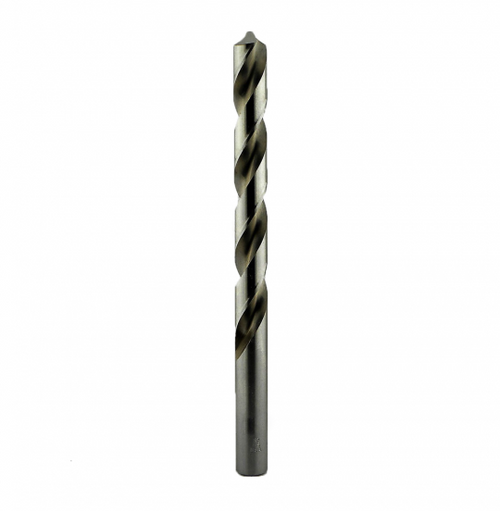
- I wonder how they reacted in the tram depot when you told them: “Guys, give me a couple of wagons, I'll tie them to my hair and move them on a bet” Didn't they send you to a psychiatrist, sorry?
- (Laughs) No. The general director of the Barnaul tram and trolleybus department was even delighted: “Ah, Ruslan! We saw you on TV, we know.” So they didn't ask me for help. I began to rehearse - to move two cars. But then they called me from the Russian Book of Records and said that Bruce Khlebnikov had already moved two carriages with his hair. Then I decided: move three!
- How did you tie the rope to your hair?
- A rope with a centimeter in diameter is put on the hair. Hair is curled up and tied. Then they bend again, tighten. And that's all: you can pull. The main thing is not to wash your hair for two days before this, so that the hair is harsh and the rope does not slip off.
- Explain why the hair does not break when doing this? What is the secret here? Have you submitted your hair to the lab for analysis?
- Did not give.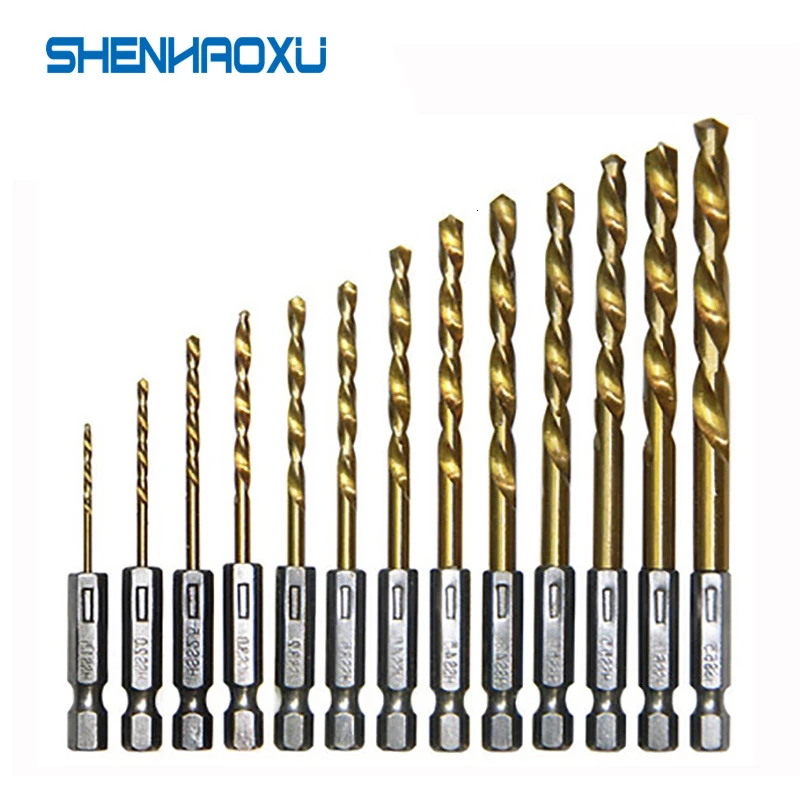 But here, I think, it's not so much in the hair as in the head. I just feel at what angle you need to position your head and neck in order to distribute the load, with what intensity to pull so as not to pinch the vertebrae and not collapse anything. I set the record in October. We placed the wagons behind me in one line, like a "train". One end of the rope was tied to the carriage, the other to my hair. A six-meter ladder lay on the ground. I bent down and, resting my feet on the ladder, began to pull a little. The cars rolled, people began to applaud, shouted something, but I did not hear. The main thing for me was to endure this tension and pain and bring the matter to the end.
But here, I think, it's not so much in the hair as in the head. I just feel at what angle you need to position your head and neck in order to distribute the load, with what intensity to pull so as not to pinch the vertebrae and not collapse anything. I set the record in October. We placed the wagons behind me in one line, like a "train". One end of the rope was tied to the carriage, the other to my hair. A six-meter ladder lay on the ground. I bent down and, resting my feet on the ladder, began to pull a little. The cars rolled, people began to applaud, shouted something, but I did not hear. The main thing for me was to endure this tension and pain and bring the matter to the end.
- Did you take any pills before? Or a little cognac Good pain relief, by the way.
- Cognac? This is dangerous. The head will “go”, you will do something wrong. I don't drink before a performance. Yes, in life too. Doesn't pull.
- Don't your relatives faint looking at your tricks?
- Dad doesn't fall. ( Smiles.) He is not supposed to be in his position. He is a policeman. Mom doesn't go to my shows. And sister Luda herself assists me. She studies at the institute as an accountant, but she graduated from the circus studio, like me, and helps me in the numbers.
( Smiles.) He is not supposed to be in his position. He is a policeman. Mom doesn't go to my shows. And sister Luda herself assists me. She studies at the institute as an accountant, but she graduated from the circus studio, like me, and helps me in the numbers.
- Does everything, probably neatly, neatly.
- Aha! I have this number. I sit with my bare back on a sharp sword, which lies on a stand. A 50-kilogram concrete slab is placed on top of me. Then my sister comes out and gently beats me with a sledgehammer. Once I tried so hard that I broke the sledgehammer!
- After your record, many Russian and Ukrainian newspapers printed photos not where you move the cars, but where you drill your nose with an electric drill. This is one of your tricks. He's somehow more impressive. Admit it, did the drill come from a store or was it custom-made from a different, softer material?
- So that the audience does not think that I have some kind of toy drill, I first drill through the board with it.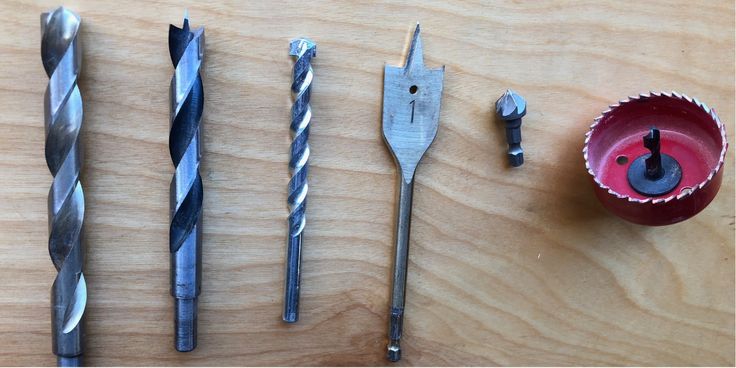 By the way, I do all the carpentry work easily - I used to study as a carpenter! Then I process the same drill with alcohol, turn on the electric drill again and insert it into the nose.
By the way, I do all the carpentry work easily - I used to study as a carpenter! Then I process the same drill with alcohol, turn on the electric drill again and insert it into the nose.
- What is the length of the drill?
- About eight centimeters.
- Does it dig into the bone, into the nasal septum, or through the nasal opening?
- Well, I haven't learned how to drill my own bones yet. I insert it into the nasal opening, and then it goes into the nasopharynx.
- I understand that you can't make a mistake. One wrong move, the slightest panic, and the drill will plunge into the brain. Did you somehow mathematically calculate the trajectory of the drill, the distance from the drill to the nasal tissues, or do you do everything at random?
- No calculations. Only practice. So that the working drill does not hurt anything, you need to learn how to hold it at the right angle. Of course, before the performance, a chill goes down the back, but I try to get rid of it.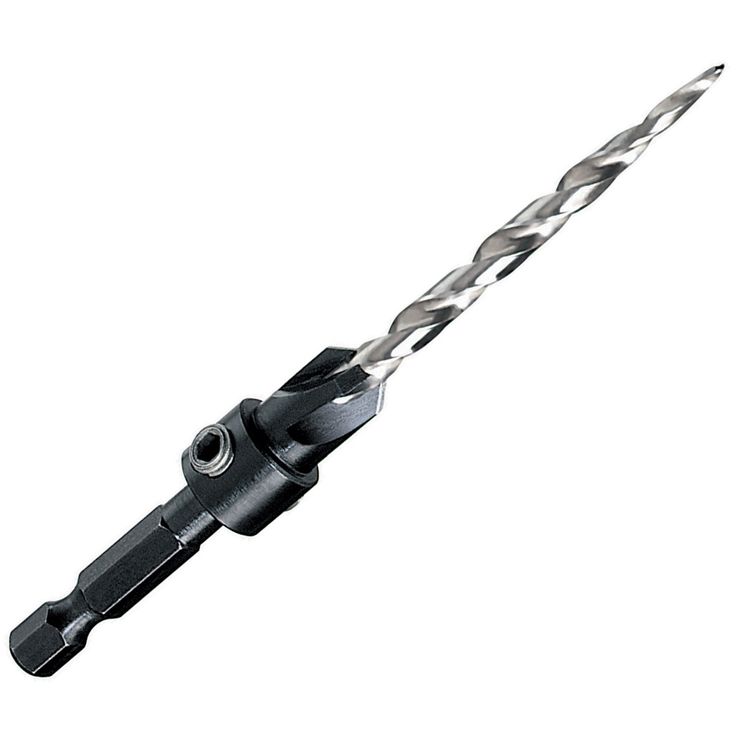 You need to drill your nose with a drill in a relaxed state. Once I couldn’t relax completely, and the drill slightly touched the tissues. Thank God, the blood went only behind the scenes and the viewer did not see any of this. There was also another situation. I went on stage, turned on the electric drill, stuck it up my nose, and then I wanted to sneeze. The drill is spinning at a frantic speed, there is deathly silence in the hall, and I am at the last stage before a sneeze. I think: I’ll sneeze - as if I’m going to make a hole in myself Slowly pulled out the drill, sneezed, then put the drill back into my nose. The audience laughed, thinking that it was intended that way.
You need to drill your nose with a drill in a relaxed state. Once I couldn’t relax completely, and the drill slightly touched the tissues. Thank God, the blood went only behind the scenes and the viewer did not see any of this. There was also another situation. I went on stage, turned on the electric drill, stuck it up my nose, and then I wanted to sneeze. The drill is spinning at a frantic speed, there is deathly silence in the hall, and I am at the last stage before a sneeze. I think: I’ll sneeze - as if I’m going to make a hole in myself Slowly pulled out the drill, sneezed, then put the drill back into my nose. The audience laughed, thinking that it was intended that way.
- And all these horrors for money?
- And for fun too There's a lot you haven't seen yet. I walk on burning light bulbs, and pierce my palm with a samurai sword, and break bricks on my head, and brake the motorcycle with my own hair. He moves off and begins to slip And I put nails in my nose A 12-centimeter one already fits in, however, the hat still sticks out. I'm planning on setting a record. On November 15, I am going to budge the Tu-154 aircraft with the help of hair.
I'm planning on setting a record. On November 15, I am going to budge the Tu-154 aircraft with the help of hair.
- Wow! What about the weaker sex? Is he running away from you or, conversely, chasing you?
- The girls are calling, but I don't need them. I already have a girlfriend, we plan to get married next summer. Here are some more girls from Moscow, from Omsk, from Odessa A good city? Dad wants to celebrate his daughter's birthday. Sixteen years old, all in piercings, has already sent me a photo on the Internet. I'm still thinking. You are far away. Although you can make good money - they offer a thousand dollars. We don't get paid much for performances. For a room with a drill, they can give 35, at most 50 dollars. Barnaul is not Moscow.
- Come!.. Maybe you can set a record with us. How much we talk with you, but I didn’t see any specific system with you. You don’t do yoga, you don’t sit on special diets. (With a height of 1 meter 70 centimeters, Ruslan weighs 58 kilograms).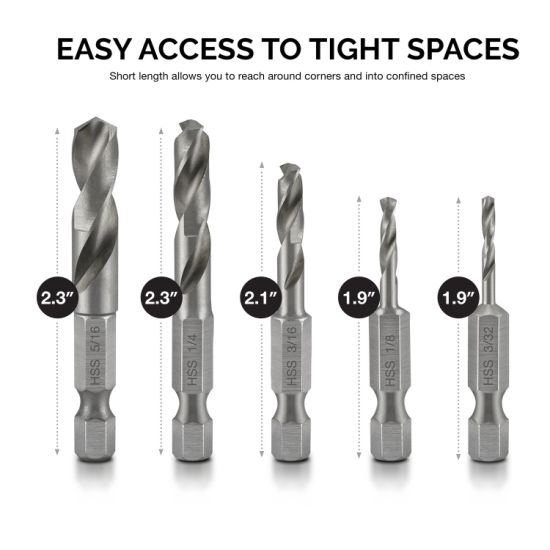 Where does this strength come from?
Where does this strength come from?
- (Silence.) Oh, I can’t figure out how to say something Yes, damn it, I don’t know myself!.. "I managed to talk with Ruslan's mother Maria Vasilievna.
- Maria Vasilievna, when they gave birth to a son, did you think that he would become a fakir and a strong man?
- Oh, I didn't think so. And how it happened. This is my first. I gave birth to him at twenty-nine. It was terrible to give birth. As you hear a lot of conversations: either the child’s hand will be broken in the maternity hospital, or the firebrand will be turned away. And mine is nothing, okay ugly, just didn’t inform him a little. Quite tiddly was born - two four hundred.
- Not sick?
- How not to get sick? He often had colds, and blood flowed from his nose. At school, he got a little stronger: he became a sport, doing ballroom dancing. But the doctors forbade sudden movements so that no one would hit him or push him. So did he take care? Growing up as a tomboy. And we climbed a tree, a fire truck took us out of there. And they put their hand into the hay mower - it almost tore off. I couldn't sit still for a minute! He needs to be careful! In winter, we now get a little sick: sometimes the flu, sometimes a cough. But if he took care of himself, warmed up, otherwise he is all the time “untowered”. The neck is bare, but his neck cannot be cooled, his throat, his nose. We are all chronic.
And we climbed a tree, a fire truck took us out of there. And they put their hand into the hay mower - it almost tore off. I couldn't sit still for a minute! He needs to be careful! In winter, we now get a little sick: sometimes the flu, sometimes a cough. But if he took care of himself, warmed up, otherwise he is all the time “untowered”. The neck is bare, but his neck cannot be cooled, his throat, his nose. We are all chronic.
- Why is he tormenting his nose then, sticking a drill in there? When your son first showed you this, was it scary?
- When I put the drill in my nose, I nearly fell to the ground. “Son,” I say, “what are you doing?” I don't go to his concerts. I'm asthmatic. As soon as I see what he is doing with himself, I immediately have an attack. I'm very worried about him. Trams are not so easy to pull What are the consequences? Maybe it’s wrong where something will pull, it will somehow strain - it will still get some kind of injury. And then, I think, maybe it will cost? There, in the husband's family, the uncle was a strong man, he bent iron.